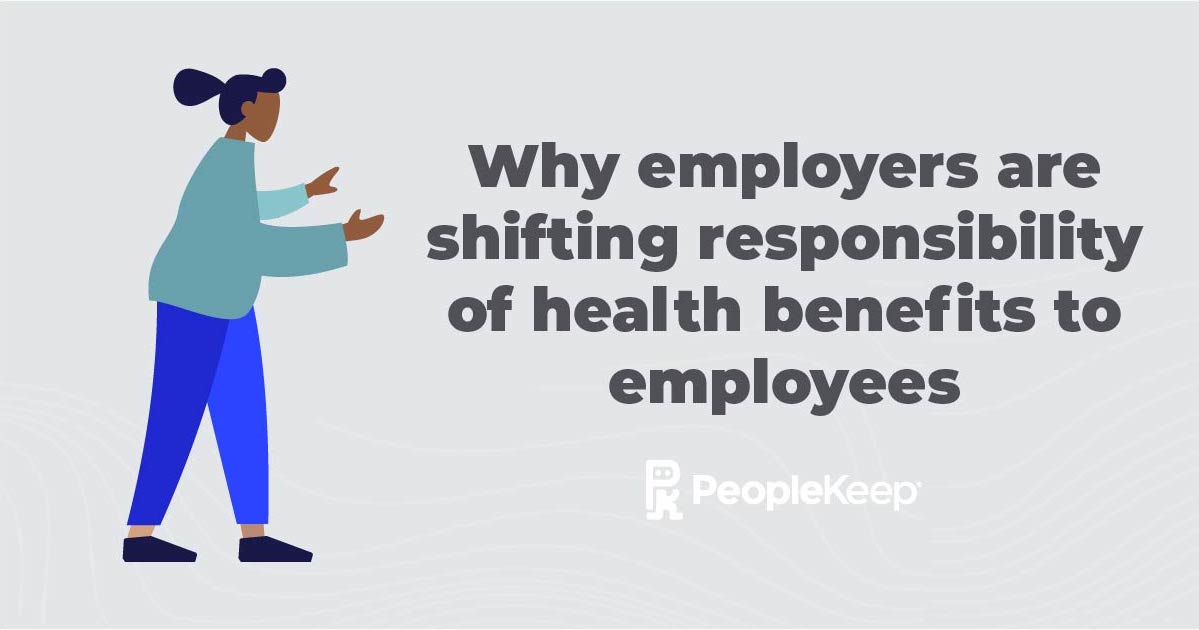Top 5 Features of Health Reimbursement Accounts
By PeopleKeep Team on January 14, 2013 at 1:00 PM
Health Reimbursement Accounts (HRAs) are health care plans paid for by an employer to reimburse the medical expenses of its employees, their spouses, and dependents. HRAs are designed to give employees more choice and greater control over their health care coverage. Here are the top 5 features of HRAs:
-
Employer Control
-
Employee Choice
-
No Pre-funding
-
No Minimum Contribution / Participation Requirements
-
Ease of Use
#1 - Employer Control
Health Reimbursement Accounts provide financial control for the employer. Specifically, employers are able to give employees their HRA allowances monthly, annually, hourly (tied to payroll or wages), or at any time on an exception basis. Deferred allowances are also possible for new hires. Through the HRA plan document, the employer decides what the contribution will be. Unlike health insurance, the employer is not required to increase employee contributions when the insurance company increases premiums. The HRA plan allows employers wide latitude in determining who is covered under their plan, when participants become eligible, and whether they may retain benefits during a leave of absence or following termination. At the employer's option, HRA plans can cover part-time employees and seasonal workers, or only full-timers or veteran employees. The HRA plan documents can also be changed by the employer at anytime during the plan year.
#2 - Employee Choice
With a health reimbursement account, the employee is in full control of their healthcare. They can choose to use the health reimbursement account money to reimburse medical expenses and health insurance plans of their choice. With a health reimbursement account, the employee chooses the carrier and plan that best fits their family's needs.
#3 - No Pre-funding
Unlike Health Savings Accounts (HSAs), HRAs do not require a separate account to hold the funds. Therefore, there is no need to pre-fund the healthcare expenses in an HRA. Employers may simply use a pay-as-you-go accounting / administration system for the best cash flow efficiency.
#4 - No Minimum Contribution / Participation Requirements
There is no limit on the amount of money an employer can contribute to an employee’s health reimbursement account. Also, there is no minimum contribution requirement. In other words, the employer can choose exactly how much money they want to contribute from $0 to an unlimited amount per month. Similarily, there are no minimum or maximum participation requirements that a company must meet in order to offer a health reimbursement account. A health reimbursement account can be offered by a company of any size even if only one (1) employee chooses to participate.
#5 - Ease of Use
Whereas group health insurance plans require employers to invest substantial time and resources into the administration and management, health reimbursement accounts are easy to administer. With HRAs, the administration can take less than 5 minutes per month, allowing the HR staff to focus on real HR issues. Each employer designs its HRA plan with the help of a broker and an administration provider, and can set terms and conditions that meet the businesses’ exact needs. Once the HRA plan is set up, employee reimbursement requests (or “claims”) are reviewed and approved by a third party, and tax-free reimbursement is paperless via direct deposit or payroll system, requiring minimal involvement from the employer.
Check out more resources
See these related articles

The CEO's Guide to Evaluating Employee Health Insurance
A guide for CEO's on evaluating employee health insurance. The 4 questions CEOs should ask about employee health insurance, and the 3 core employee health insurance options.

Why employers are shifting the responsibility of health benefits to employees
Employers today are giving their employees more control over their own healthcare experience. See how it's a win-win for both organizations and employees.

Types of employee reimbursements
Explore the different types of employee reimbursements, like travel, healthcare, and more. Learn how reimbursements benefit both employees and employers.



